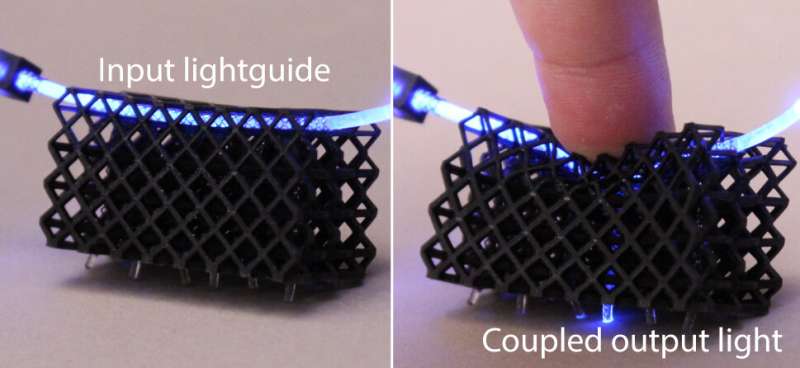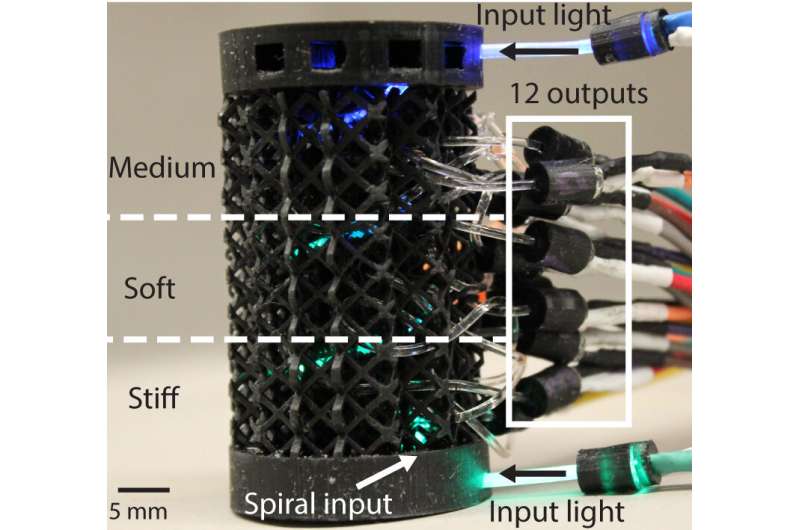Nerve-like 'optical lace' gives robots a human touch

A new synthetic material that creates a linked sensory network similar to a biological nervous system could enable soft robots to sense how they interact with their environment and adjust their actions accordingly.
The stretchable optical lace material was developed by Ph.D. student Patricia Xu through the Organics Robotics Lab at Cornell University.
"We want to have a way to measure stresses and strains for highly deformable objects, and we want to do it using the hardware itself, not vision," said lab director Rob Shepherd, associate professor of mechanical and aerospace engineering and the paper's senior author. "A good way to think about it is from a biological perspective. A blind person can still feel because they have sensors in their fingers that deform when their finger deforms. Robots don't have that right now."
Shepherd's lab previously created sensory foams that used optical fibers to detect such deformations. For the optical lace project, Xu used a flexible, porous lattice structure manufactured from 3-D-printed polyurethane. She threaded its core with stretchable optical fibers containing more than a dozen mechanosensors and then attached an LED light to illuminate the fiber.
When she pressed the lattice structure at various points, the sensors were able to pinpoint changes in the photon flow.

"When the structure deforms, you have contact between the input line and the output lines, and the light jumps into these output loops in the structure, so you can tell where the contact is happening," Xu said. "The intensity of this determines the intensity of the deformation itself."
The optical lace would not be used as a skin coating for robots, Shepherd said, but would be more like the flesh itself. Robots fitted with the material would be better suited for the health care industry, specifically beginning-of-life and end-of-life care, and manufacturing.
While the optical lace does not have as much sensitivity as a human fingertip, which is jam-packed with nerve receptors, the material is more sensitive to touch than the human back. The material is washable, too, which leads to another application: Shepherd's lab has launched a startup company to commercialize Xu's sensors to make garments that can measure a person's shape and movements for augmented reality training.
The paper, "Optical Lace for Synthetic Afferent Neural Networks," was published Sept. 11 in Science Robotics.
More information: P.A. Xu el al., "Optical lace for synthetic afferent neural networks," Science Robotics (2019). robotics.sciencemag.org/lookup … /scirobotics.aaw6304



















